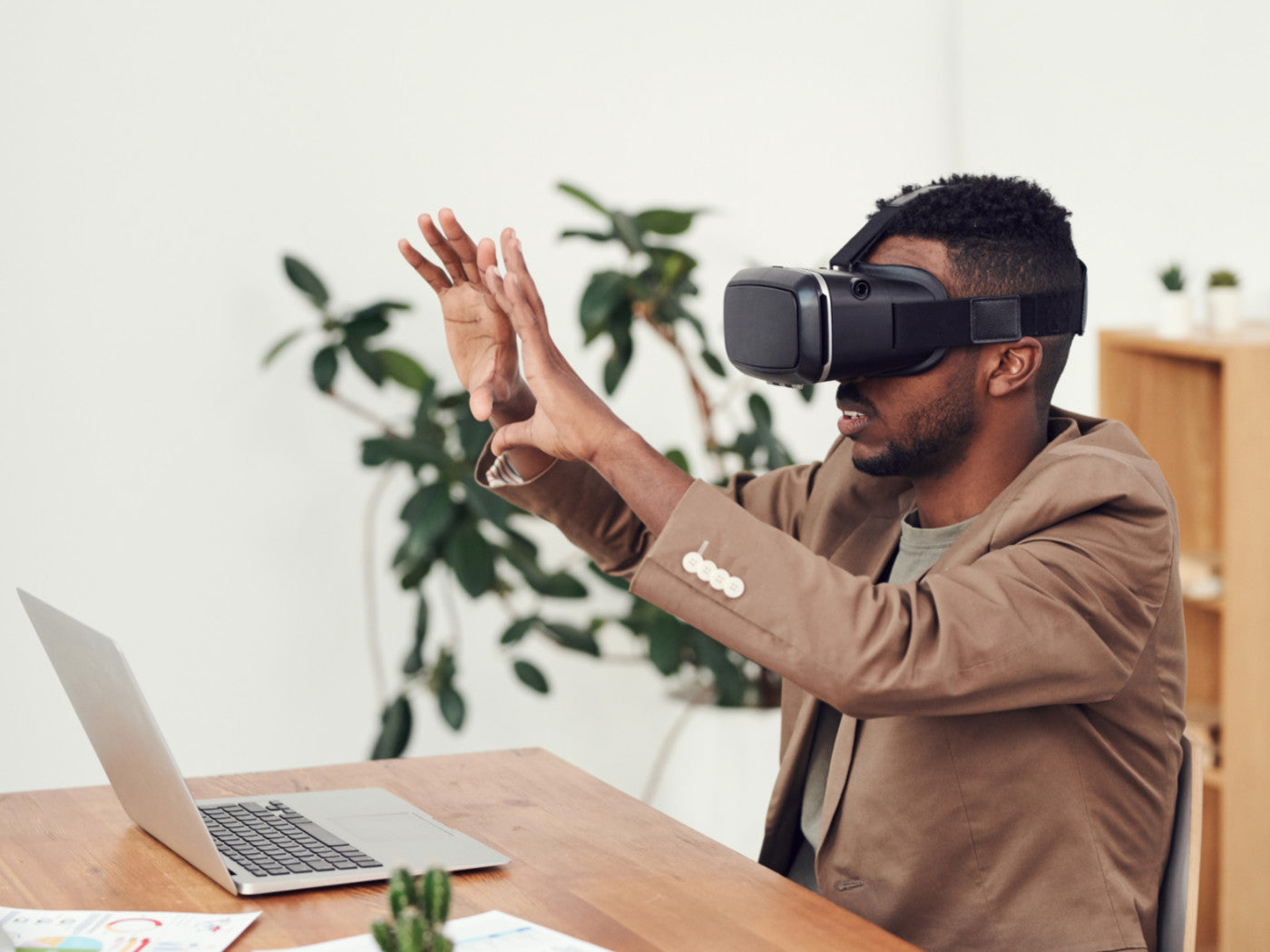Virtual Reality (VR) and Augmented Reality (AR) have emerged as transformative technologies that redefine the way we perceive and interact with the digital world. While both VR and AR offer immersive experiences, they differ in their approaches and applications. Understanding the distinctions between these technologies is essential to fully appreciate their potential and explore the exciting possibilities they present.
Understanding Virtual Reality
Virtual Reality creates a simulated environment that transports users into a computer-generated world. By wearing a VR headset and using specialized controllers or gloves, users can interact with the virtual environment and manipulate objects in a realistic and immersive manner. VR aims to provide a complete sensory experience by engaging sight, sound, and sometimes even touch, enabling users to explore new worlds, engage in gaming adventures, or undergo virtual training simulations.

The key characteristics of VR include the creation of an entirely artificial environment, a sense of presence and immersion, and the ability to interact with and navigate within the virtual space. VR has found applications in various industries, including gaming, architecture, healthcare, and training, offering opportunities for entertainment, education, and innovative problem-solving.
VR Technology and Hardware
VR encompasses a range of hardware, including standalone headsets, PC-tethered systems, and smartphone-based setups. Standalone headsets, such as Meta Quest, offer untethered experiences, while PC-tethered headsets, like the HTC Vive and Oculus Rift, provide higher fidelity visuals. Smartphone-based VR, such as Google Cardboard, leverages the power of smartphones to deliver accessible VR experiences.
Applications of Virtual Reality
Virtual Reality finds applications in various domains, including gaming, education, training, architecture, healthcare, and entertainment. In gaming, VR offers immersive experiences, realistic simulations, and interactive storytelling. Educational institutions utilize VR for virtual classrooms, medical training, and skill development.

Architects and designers employ VR for virtual walkthroughs and spatial planning, while healthcare professionals leverage it for therapy, rehabilitation, and pain management. VR also enhances entertainment and media experiences, enabling virtual concerts, live events, and immersive cinema.
Must Have VR Accessories:
1. ZyberVR PC VR Charging Cable
2. ZyberVR Black Sling Bag
3. ZyberVR Magnetic Battery Pack
4. ZyberVR Link Cable
Exploring Augmented Reality
Augmented Reality overlays digital information onto the real world, enhancing our perception of the environment. Unlike VR, AR does not create an entirely new world but augments our existing reality by superimposing computer-generated content onto our surroundings. AR can be experienced through smartphones, tablets, smart glasses, or specialized AR headsets.
AR enhances real-world experiences by adding contextual information, virtual objects, or interactive elements to the physical environment. It enriches our understanding of the world by blending virtual and real elements seamlessly. AR applications range from interactive games and educational tools to practical utilities such as navigation assistance, product visualization, and real-time information display.

The key features of AR include real-time interaction with the physical world, the ability to overlay digital content onto the real environment, and the potential for enhancing our perception and understanding of reality. AR has gained traction in areas like marketing, design, retail, and industrial applications, transforming how we engage with products, interact with advertisements, and navigate through spaces.
AR Technology and Devices
AR experiences can be accessed through smartphones, tablets, and dedicated AR headsets. Platforms like Apple ARKit, Google ARCore, and Microsoft HoloLens enable developers to create AR applications. AR relies on cameras, sensors, and depth tracking to blend digital content seamlessly with the user's surroundings.
Applications of Augmented Reality
Augmented Reality finds diverse applications across industries. In gaming and entertainment, AR powers popular games like Pokemon Go, offers AR escape rooms, and facilitates interactive storytelling experiences. Retail and e-commerce benefit from AR by providing virtual try-on capabilities, product visualization, and interactive catalogs.

AR aids navigation and wayfinding through AR-based maps, real-time directions, and location-based information. Industrial and manufacturing sectors leverage AR for maintenance assistance, remote collaboration, and assembly guidance. In education, AR enhances learning through interactive textbooks, AR-based experiments, and virtual field trips.
Recommended Accessories For Augmented Reality:
1. ZyberVR Black Sling Bag
Key Differences and Similarities between VR and AR
Immersion and Environment
VR creates fully immersive, computer-generated environments that transport users into virtual worlds. AR, on the other hand, overlays digital content onto the real world, enhancing the user's perception of their surroundings.
Interaction and Input
VR enables users to interact with virtual objects and environments using controllers or hand tracking. AR allows real-time interaction with the physical environment, often through gestures or voice commands.
Devices and Accessibility
VR requires dedicated headsets and computing power, making it more specialized and less accessible to the general public. AR experiences can be accessed through smartphones and tablets, offering greater accessibility.
Applications and Use Cases
VR is primarily used for gaming, simulations, and immersive experiences. AR finds applications in gaming, retail, navigation, education, and industrial sectors, augmenting real-world interactions.
Conclusion
Virtual Reality and Augmented Reality represent two distinct yet interconnected paths in the realm of digital experiences. VR immerses users in simulated environments, while AR enhances the real world with digital overlays. Both technologies offer immense potential for transforming industries and revolutionizing the way we interact with digital content. As VR and AR continue to evolve, it is essential for individuals and businesses to explore these technologies, unlocking new possibilities and shaping the future of immersive experiences.





